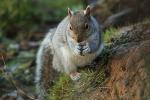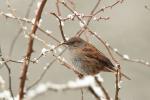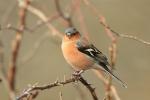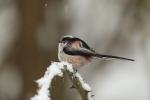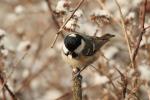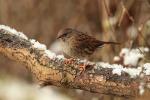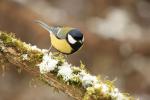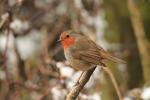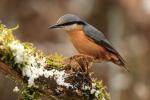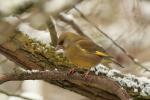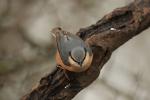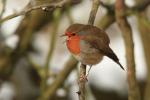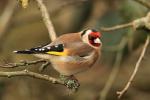Brayton Barff Through the Seasons.
Set in the Vale of York, South West of the market town of Selby and between the villages of Thorpe Willoughby and Brayton, lies Brayton Barff, a sandstone Hill approximately one hundred and fifty feet in height which was formed by glacial movement during the last Ice Age. It is a significant landmark in an otherwise flat landscape.
Today the site is primarily owned by Yorkshire Water with Selby District Council owning a small patch of the land adjacent to the A63 Selby bypass. A large underground reservoir occupies the centre of the site which delivers water to around 4.7 million customers throughout Yorkshire.
Within the Barff woodland over 40% of the trees are Sessile Oak which are generally found in semi natural woodlands in the north of the country. These trees are so called because its acorns are not held on stalks, like those of the English Oak (Pedunculate), but attached directly to the outer twigs. There are also several English Oak trees as well as some cross-hybrid oaks. These trees are known to support many species of flora and fauna, invertebrates, mosses, lichen and fungi.
During the Victorian times it is thought that the shipbuilders on the east coast would come over to the Barff for selected cuts of timber to build their sea going vessels.
The Barff also has a variety of other trees including Silver Birch, Beech, Sycamore, Holly, Rowan, Scots Pine, Alder, Hawthorne and European Larch. There are also several Yew, Willow, Hazel, Horse Chestnut and Wych Elm. As with similar woodlands there are a variety of bushes, including Honeysuckle, Elderberry, Gorse, Broom and Buddleia.
The history of Brayton Barff is quite vague, apparently during 1803 a beacon was lit on the Barff when the country was threatened with an invasion by Napoleon. In May 1935, to celebrate King George V's Silver Jubilee, a Bonfire was lit on the Barff as part of the celebrations.
Early issues of Ordnance Survey Maps dated 1903 clearly show a rifle range on the Barff, extending out to Mill Lane. During the 
Between 2001 – 2004 the A63 Selby bypass, 10km twin lane single carriageway was constructed which severed the South West corner of the Barff, adjacent to Selby Golf Course and resulted in a slight redesign of several holes on the golf course. Wooden fencing was erected as a result of this new road running alongside of the Barff and a footbridge constructed over the ‘new road’ following the line of the Bridal way which extends from Mill Lane. Around 2005/2006 a definite 2metre wide limestone aggregate footpath was laid forming a circular path around the outer edges of the woodland. This footpath is approximately 1.2 miles in length and takes about 30 minutes to circumnavigate at a leisurely pace.
In 2012 the Barff was declared an Ancient Oak Woodland and as such throughout 2012 and 2013 significant work had been carried out by the relevant agencies to cut and remove large swathes of non-native trees, creating at that time huge scars on the landscape. Some three years later the planting of the native trees have become well established and are flourishing. Ongoing maintenance work on the footpath around the bottom of the Barff was completed during the Summer of 2016.
A second phase of woodland maintenance commenced during the Autumn of 2019 with the removal of many old and diseased trees and the cutting back of the Gorse and Broom bushes, especially adjacent to the ‘bypass trail’, this work continued through till March 2020 with re planting continuing into April 2020.
Brayton Barff is a popular site for walkers and bird watchers alike and a path circling the outer perimeter of the Barff makes a pleasant thirty minute walk, giving views looking over towards Selby and the village of Brayton as well as the power stations of Drax and Eggborough..jpg)
For the early risers it is a great place to see some stunning sunrises over the villages of Brayton looking towards Drax Power Station, the same with the Sunsets looking over towards Eggborough and Monk Fryston.
The Barff changes with the Seasons and every visit can reveal something new, the woodland is a haven for wildlife. Records show that since 1982 one hundred and twelve species of bird have been seen in the woodland and at least 40 of those have bred here, including Tawny Owl, Buzzard, Green Woodpecker, Spotted Flycatcher, Goldcrest and Nuthatch to name just a few. On average over 70 species of bird are recorded each year. Further details of the bird life on the Barff can be found on the Brayton Barff Group Facebook page, especially the posts from Derek Cooper. Today ‘The Friends of Brayton Barff group’ led by Derek and a small team of volunteers help keep and maintain the cleanliness of the site as well as recording the wildlife and bird sightings.
The Barff is also home to fifteen different species of mammals, including Muntjac Deer, Pipistrelle Bat, Fox, and Field Vole.
Over eighty species of plant and wildflowers have been recorded, included Bee Orchid, Northern Marsh Orchid, Wood Anemone, Marsh Ragwort, Bluebell, White Bluebell, Bittersweet and Purple and White Foxgloves. Over twenty species of Butterfly have been recorded, including Marbled White, Brown Angus, Speckled Wood, Comma and Brimstone.
During the Autumnal months fungi thrives in this woodland environment, species including Fly Agaric, Beefsteak Tree Fungi, Chicken of the Wood, Sulphur Tufts, Stinkhorn, Ink cap, Puffballs and Hoof Bracket are just some of the many varieties that can be found here.
Click on the galleries shown below to expand the albums.
Sunday 14th February 2021
Well, here we are halfway through February and our sixth week of the Coronavirus Lockdown since Christmas. Except for a dental check and opticians appointment life has continued much the same for me. The government have just announced today that the NHS have now vaccinated 15 million people in the UK against the virus, so that is some really good news, let’s hope the supply of vaccines continues apace and more people including our key workers can receive theirs very shortly too.
February started with a bitterly cold overnight frost, the overnight temperature on the morning of the 1st dropped to -3C at 7.00am. I much prefer the dry colder mornings than wet and soggy ones and we had a few of those last month, which in turn made all the small tracks on the Barff extremely muddy and difficult to walk on, let alone making the dogs mucky and wet. The following day was much the same, though during the early hours of Tuesday 2nd February we had a heavy downfall of snow. Snow on the Barff completely transforms that landscape, covering the whole area in a huge white blanket. Unfortunately, the snow didn’t last for too long and within a couple of days had all but disappeared, making all the footpaths on the Barff wet and very muddy again. Sunday 7th February was a dry and bitterly cold day, with some light snow flurries on and off throughout the day. The following morning the light snow flurries continued, the air temperature was 0C at 7.00am, but the strengthening SW wind made it feel like -4C. the snow showers fizzled out during the afternoon. It was during the early hours of Tuesday 7th February that we had some more heavy snow and by 7.00am was about 1.5 inches deep, the air temperature was -1C, which made it a bitterly cold morning. I put the winter dog jackets on Meg & Grace, mainly to keep them warm and dry as I had them with me whilst I was busy photographing and didn’t want them to get cold whilst I was composing the pictures. Snow flurries continued for the next two days and with cold days and overnight temperatures dropping as low as -4C the snow stayed on the ground till the rain came late this Sunday evening. Fortunately, last Tuesday and Wednesday morning I was able to get some nice pictures and spent a fair bit of time filming the wildlife which has had a tough week due to the frozen ground. It has been amazing watching and seeing how resilient the wildlife can be on the Barff during these freezing conditions. The Greater Spotted Woodpeckers have been hard at work, drumming on trees in search of food as well as finding and making nest holes, Nuthatches have been really vocal too, their distinctive short call can be heard nearly all the way around the woodland at the moment, Great Tits and Robins have been plentiful too. That said, I haven’t seen as many Grey Squirrels this past week, they may be staying in their Dreys till a little later in the morning in the hope that the air temperature warms up a little. Chaffinch and Goldfinch as well as a few Long-Tailed Tits have been showing well and looked good in the morning sunshine. Looking at the weather forecast for the next seven days it looks to be the last of the snow for the time being and by next weekend the temperatures have been predicted to rise to between 10C – 12C, signs that Spring is just around the corner?
|

